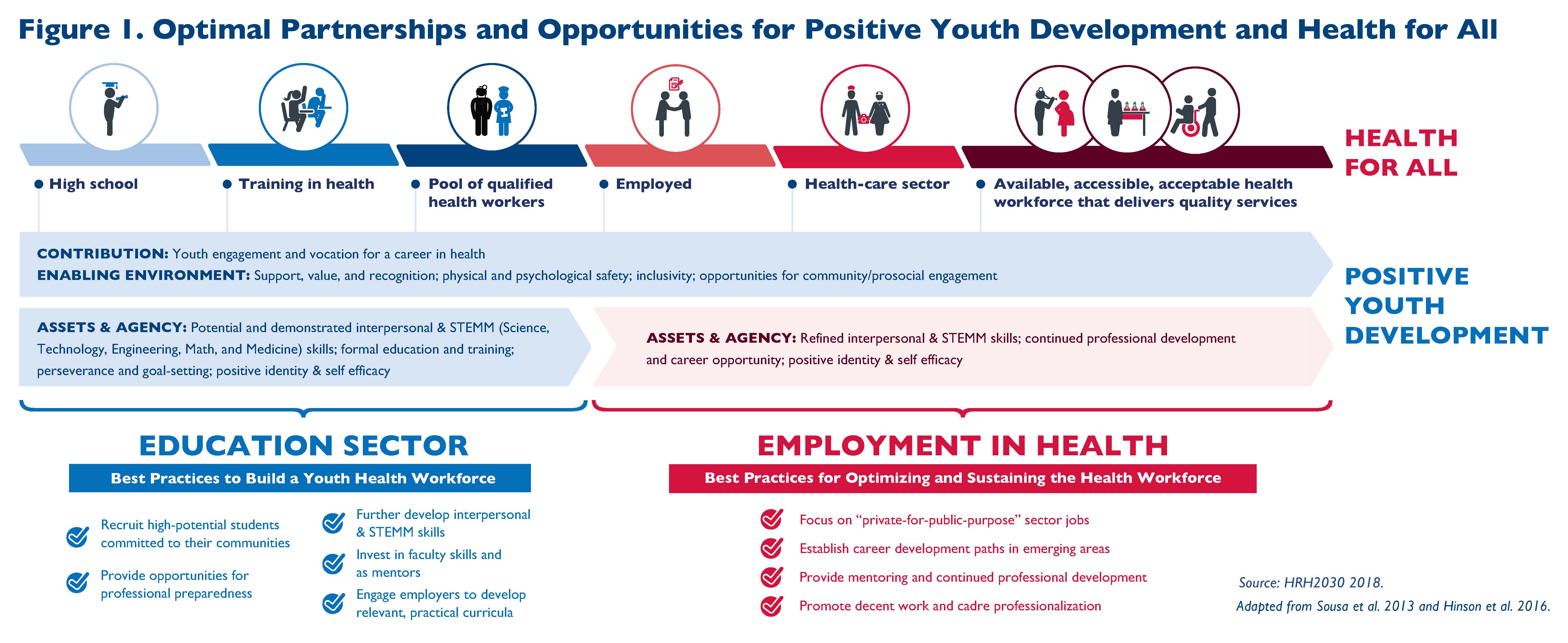
20 Aug Let’s Transform Health Professional Education to Better Serve Our Youth and Communities
This blog originally appeared on the Frontline Health Workers Coalition website.
This year’s International Youth Day theme calls on the global community to Transform Education to be more inclusive, equitable, and relevant for youth.
Taking a comprehensive, whole-of-system approach to transform health professional education for a new century can help achieve the Sustainable Development Goals for reduced poverty, quality education, reduced inequalities, decent work, gender equity, and health for all.
How can we transform health professional education for youth and future health professionals?
We need a more inclusive health professional education system that addresses structural barriers so more diverse youth can participate in the health workforce. We need more female, rural, indigenous, marginalized, LGBTQI, economically disadvantaged, and disabled youth in the global health workforce to better reach those who currently don’t have access to essential health services. Many young people around the world are not aware of the opportunities, or they are discouraged by the financial and cultural barriers to promising careers in health. Investing in health professional schools outside of large capital cities can bring education opportunities to rural and underserved populations. The USAID YouthPower Positive Development Framework illustrates the assets, agency, contribution, and enabling environment that institutions should seek to reinforce in youth pursuing health professional education opportunities.
Imagine: Ana is a bright, motivated young woman who wants to help the communities in her remote village stay healthy. She aspires to become a laboratory technician, thanks to a field trip to a local health center that she took during secondary school. Ana and her friends understand how to prepare for the free vocational school entrance exam and they are encouraged that this is within their reach. Ana is accepted to a laboratory assistant program of study that is local, flexible, and paced so she can also balance her family responsibilities. The vocational school has strong female faculty leaders, offers evening tutoring sessions to fill gaps in her STEM skills which her secondary school preparation may have lacked, and a scholarship program in partnership with a private-sector company so that families can afford subsidized program fees.
More equitable health professional education is accountable to build a health workforce that delivers high-quality services. The quality of health professional education tends to be highly variant from one program of study to the next, and how prepared graduates are. Holding faculty and administrators accountable for the quality of schools by posting national accreditation results or other metrics publicly can help inform health professional students when seeking high-quality education. This transparency also improves the competition within the health job market and ultimately the quality of health services that health workers provide. Youth should be genuinely involved in decision-making and be providing feedback on their educational experience. Schools should integrate more practical, interprofessional, community-based education that includes exposure to health issues faced by underserved populations.
Imagine: Thanks to the scholarship program, Ana’s family can afford her laboratory assistant training, so she enrolls. Ana and her family are confident that she will receive high-quality education because they can refer to published accreditation reports on the school. Also, Ana knows the student representative who participates on the school’s leadership council will voice any youth concerns. The school incorporates competency-based teaching approaches for all students—including laboratory, medical, nursing, and pharmacy students—that culminates in a service project with an underserved community to learn how to engage its members for more effective disease surveillance, diagnostics, and control.
More relevant health professional education contributes to health system resilience and helps achieve health for all. When health professional education institutions are nimble to integrate new health challenges, such as Zika or diabetes, into their curriculum, in turn the health system can be more responsive to the evolving job market, as well as demographic and epidemiological changes and career development. Local, flexible, affordable in-service education and continuing professional development promote a more responsive, adaptive health system. Partnerships, including with the private sector, can help schools innovate in ways that help them respond to the health labor market. In addition, better educated youth have healthier futures.
Imagine: Ana’s vocational school has a partnership with private sector employers to ensure that her laboratory assistant studies will keep her competitive in the local job market and connect her to jobs. Soon after graduating and certifying as a lab assistant, Ana gets a job at a clinic. She knows her continuing professional development options so she can plan for them, especially after she marries and has children. She remains motivated because she feels well prepared to complete her work and collaborate with other health workers at the clinic, many of whom she worked alongside during her studies. When there is a local disease outbreak, her clinic team is quickly mobilized and trained up to respond, and they work effectively together. As a health worker, Ana is a role model for wellness, demonstrating to her family and community how to prevent disease and promote health.
The USAID-funded HRH2030 program is developing strategies for building the future health workforce and connecting youth to careers in the health sector. To learn more, see our conceptual framework (see Figure 1 below) and join us on October 3 rd at the Global Youth Economic Opportunities Summit, where we will present our work at a side session “Identifying ‘Win-Win-Win’ Partnerships for Youth Employment in Health.”

Photo: Midwifery students wait for their class to begin at the Budi Kemuliaan private maternity hospital and midwifery school in Jakarta, Indonesia in September 2018. Photo credit: Rachel Deussom for HRH2030/Chemonics International





